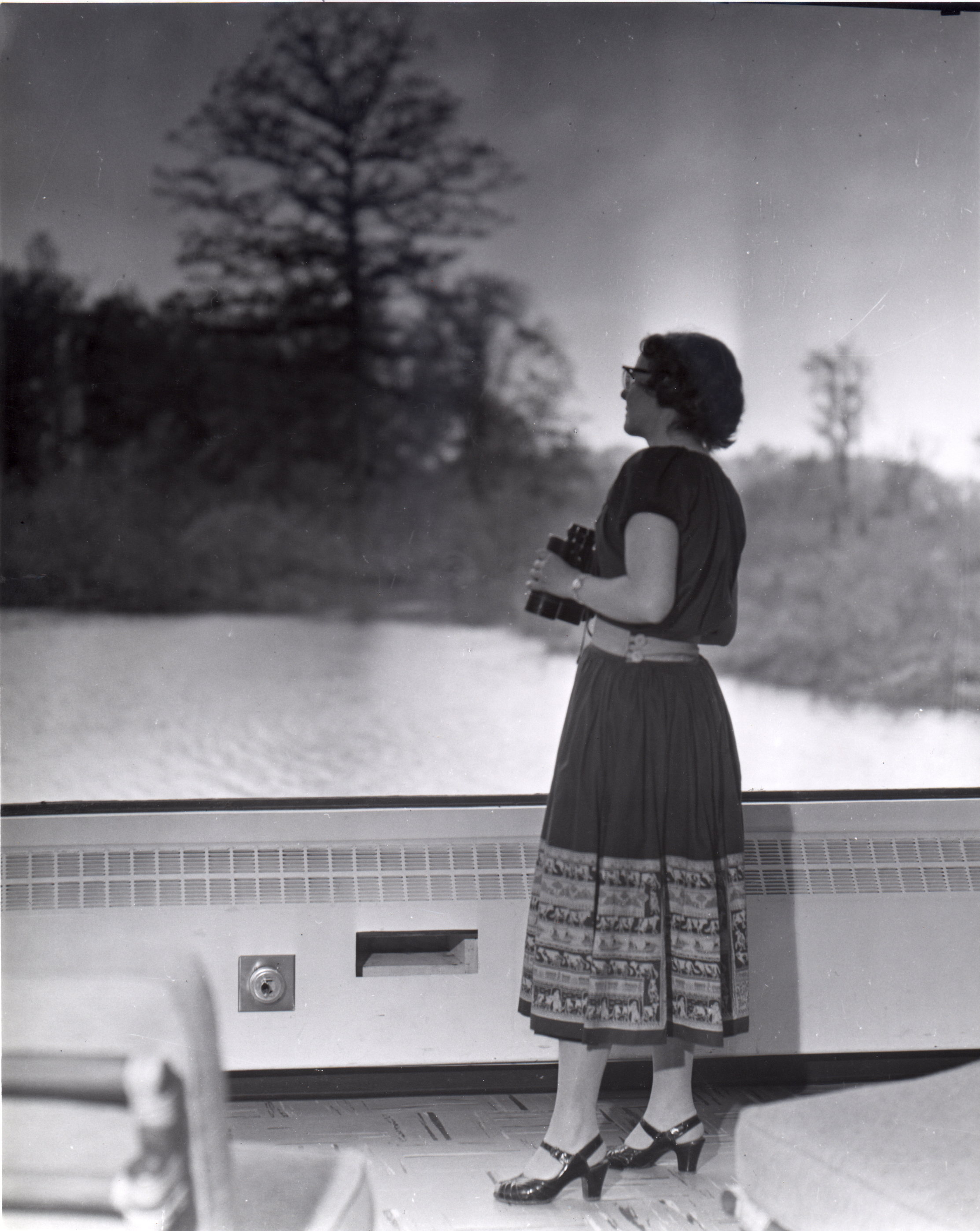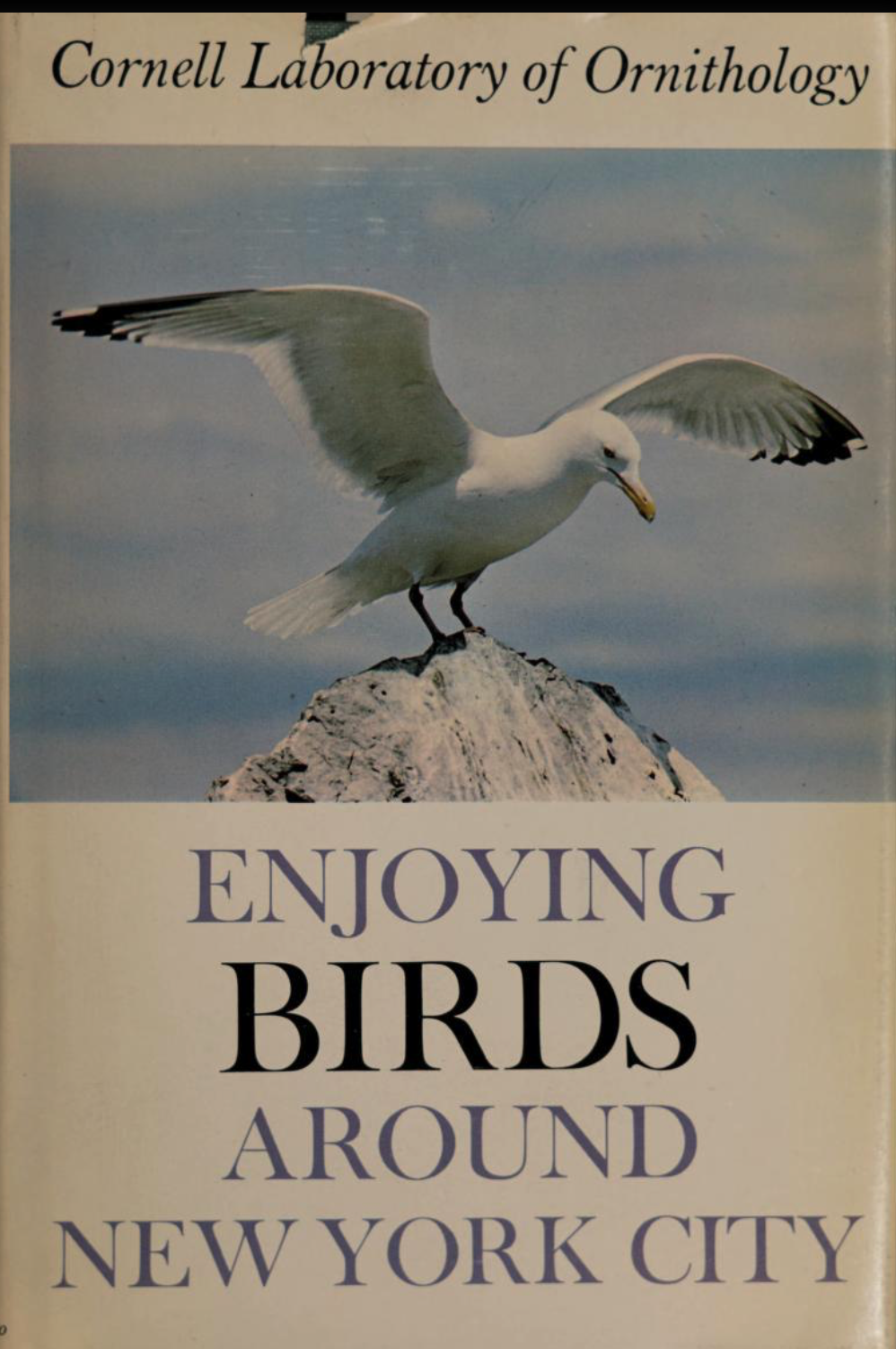CELEBRATING
THE HISTORY OF WOMEN IN ORNITHOLOGY
A recent study [1] of papers published from 1970 to 1990 in computational population genetics in the journal Theoretical Population Biology found that women were acknowledged for their contributions at a much higher rate than they appeared as authors. During that period only 7% of authors were women whereas 43% of ‘acknowledged programmers’ were women. The authors argue convincingly that the substantial contributions of women in this supporting role has been seriously under-appreciated.
I have already written about ‘invisible women’ (here) whose contributions to ornithology were substantial but we have no idea what their names were. Today I want to highlight the contribution of one woman—Sally Hoyt Spofford—who was well-known in ornithological circles, but whose contributions were largely in supporting the accomplishments of her male partners, mentors and employers. I have no doubt that she was fairly typical of women who contributed to ornithology from the early 1800s until about 1970 (see here), and this seems like a good time to celebrate their work and to acknowledge their contributions to the growth of our discipline.

Growing up in Pennsylvania, Sally Foresman developed an early interest in birds from her parents, an interest she pursued through her undergraduate honors program, an MS at the University of Pennsylvania (1936) and a PhD from Cornell (1948). I expect that she was one of the earliest women anywhere to obtain a PhD on ornithology. A 1954 paper [2] listing 133 unpublished North American theses produced until then in ornithology, for example, includes only 18 theses by women and only 3 of those (including Hoyt’s) were PhDs.
Sally began her PhD with Arthur A. Allen in the Department of Conservation at Cornell in 1939, and married a fellow PhD student, John Southgate Yeaton Hoyt, in 1942. The Hoyts took some time off from their studies during WWII, but otherwise worked together on their theses, with Sally helping South, as he was called, with his field work on Pileated Woodpeckers. Sally’s own PhD thesis was a 592-page survey of techniques for the study of birds. As far as I know no publications arose from that work but it may well have informed publications from the Lab of Ornithology [3].
The list of Sally and South’s’ fellow graduate students at Cornell reads like a who’s who of mid-twentieth century ornithology—Dean Amadon, Brina Kessel, Allan Phillips, Kenneth Parkes, to mention just a few. Both Sally and South showed lots of promise but soon after they graduated, South was diagnosed with cancer and died in 1951. Sally took time off to look after South, then returned to Cornell to work for Arthur A. Allen. In 1957 she wrote up South’s thesis for the journal Ecology, fully acknowledging that “the credit for the work should go in his memory and not to this writer, who acts chiefly as compiler.” [4]

In 1957, Allen moved his research group to Sapsucker Woods just east of Ithaca, where he established the Cornell Laboratory of Ornithology. Sally came along as his Administrative Assistant and was the ‘heart and soul’ of the Lab until her retirement in 1969. At the lab, she conducted nature walks for the public in Sapsucker Woods, participated in a radio program ‘Know Your Birds‘ recorded at the lab, and looked after the needs of graduate students, research and visitors from the general public.
In the 1950s and 60s, Dr Walter Spofford, a neuroanatomist from Syracuse, frequently visited the Lab to attend seminars and talk about birds. Spoff, as he called himself, was an expert on raptors and wanted to learn more about them. Spoff and Sally became best friends and were married in 1964. Over the next two decades, they made many birding trips to Alaska, helping with Peregrine, Gyrfalcon, and Golden Eagle surveys. They also studied the communities of eagles in Zimbabwe and became so well know for their raptor work that Leslie Brown dedicated his British Birds of Prey to them.

As an ornithologist, Sally’s passion was education and what we now call outreach, though she also published about 50 short papers based on her observations, and was coauthor on two birding guides [5]. She wrote well and had a knack for engaging titles, like that of her 1969 paper: Flicker incubates pink plastic balls, on a lawn, for five weeks.
After retirement, Sally and Spoff donated their property near Ithaca to the Finger Lakes Land Trust where it became the Etna Nature Preserve. In 1972 they moved to Cave Creek Canyon in Arizona where they welcomed thousands of birders each year to their Rancho Aguila to see, among other things, the dozen species of hummingbirds that came to their feeders. Spoff died in 1995 but Sally stayed on at the Ranch until she died in 2002, continuing to feed her hummingbirds and to champion the cause of conservation in the Chiricahuas.
The early Lab of Ornithology and so many both young and old ornithologists and birders owe a great deal to Sally’s enthusiasm and guidance. In the acknowledgements of his PhD thesis, South Hoyt anticipated a fitting eulogy for her life when he wrote “without the more than generous help both physical and mental given by my wife, Sally Hoyt who was always ready to do what seemed to need doing” [6]

SOURCES
- Arbib RS Jr, Pettingill OS Jr, Spofford SH ( 1966) Enjoying Birds around New York City. Boston: Houghton Mifflin
- Brown L (1976) British Birds of Prey. London: Collins.
- Dung SK, López A, Barragan EL, Reyes R-J, Thu R, Castellanos E, Catalan F, Sanchez EH, Rohlfs RV (2018) Illuminating women’s hidden contribution to the foundation of theoretical population genetics. bioRxiv preprint first posted online Jul. 5, 2018; doi: http://dx.doi.org/10.1101/360933.
- Hoyt JSY (1948) Further studies of the Pileated Woodpecker, Hylatomus pileatus (Linnaeus). PhD thesis, Cornell University, Ithaca, NY. 324 pp.
- Hoyt SF (1948) A reference book and bibliography of ornithological techniques. PhD thesis, Cornell University, Ithaca, NY. 542 pp.
- Hoyt SF (1957) The ecology of the Pileated Woodpecker. Ecology 38: 246-256
- Pettingill OS (1946) A Laboratory and Field Manual of Ornithology, 3rd ed. Minneapolis, MN: Burgess Publishing
- Pettingill OS (1963) Enjoying birds in upstate New York; an aid to recognizing, watching, finding, and attracting birds in New York State north of Orange and Putnam Counties. Ithaca, NY: Laboratory of Ornithology..
- Spofford SH (1969) Flicker incubates pink plastic balls, on a lawn, for five weeks. Wilson Bulletin 81: 214-215
- The Committee on Research (1954) Unpublished theses in ornithology. The Auk 71: 191-197.
Footnotes
- recent study: see Dung et al. (2018)
- 1954 paper: see The Committee on Research (1954)
- publications from the Lab of Ornithology: Pettingill, who was later Hoyt’s boss, for example, published the revised edition of his ornithology manual in 1946
- quotation by Sally Hoyt: from Hoyt (1957)
- two birding guides: Arbib et al. (1966) and Pettingill (1963)
- quotation by South Hoyt: from Hoyt (1948)
IMAGES: drawing of Cornell Lab of Ornithology from Arbib et al (1966); photos of Spofford from Lab of Ornithology (top) and Wikipedia (bottom); book cover from Biodiversity Heritage Library
Nice article about Sally. Met her first when I was a postdoc at Cornell, then several times in Az.
Well done,
Alan